

William Stopford
The cars revealed in 2025 we wish would come to Australia
5 Hours Ago
Natural gas is often used in homes across Australia, for everything from heating to cooking. Around the world, it’s also used as an alternative fuel for cars.

Contributor
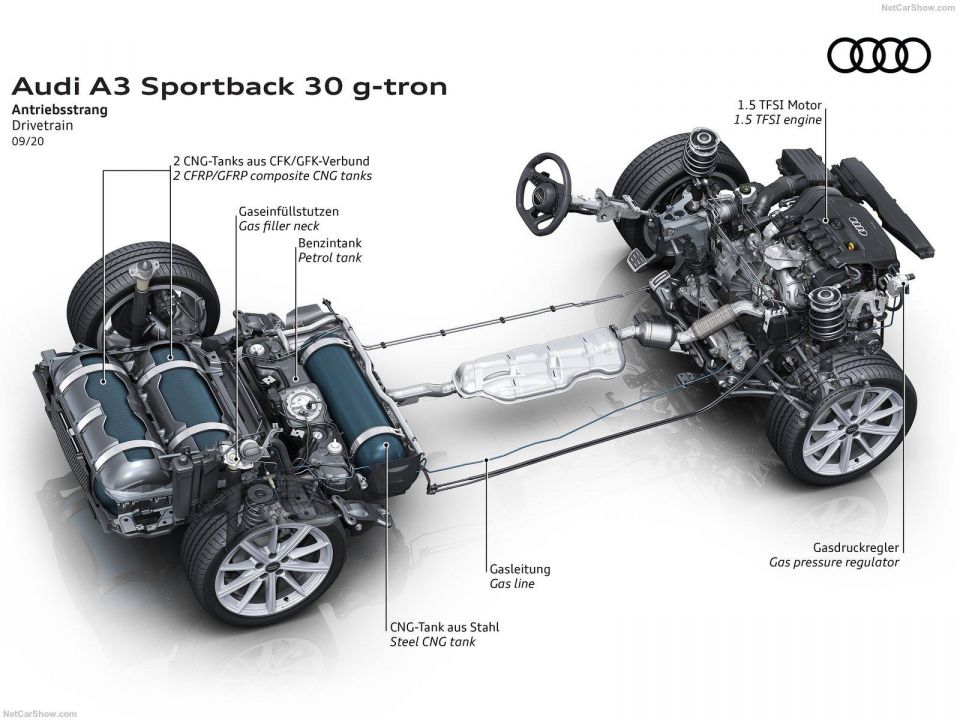

Contributor
Gas stoves and heating. Natural gas is a popular fuel in Australia, used for everything from making that stir-fry to keeping warm on chilly winter nights. Around the world, natural gas in its compressed form, known as CNG (Compressed Natural Gas), is also used as a fuel for vehicles.
Although CNG sounds similar to LPG (Liquified Petroleum Gas), the two are fundamentally different fossil fuels. Unlike LPG, which consists of propane or a blend of propane and butane, CNG consists primarily of methane.
Natural gas comes from either conventional or unconventional sources. As hinted at by its name, in both cases the gas is found naturally, and therefore requires comparatively little processing compared to LPG (which is a by-product of processing crude oil).
In Australia, the conventional sources of natural gas are permeable rock formations such as sandstone, siltstone, and other carbonates. These formations contain cavities that enable the gas to easily flow through and subsequently be extracted.
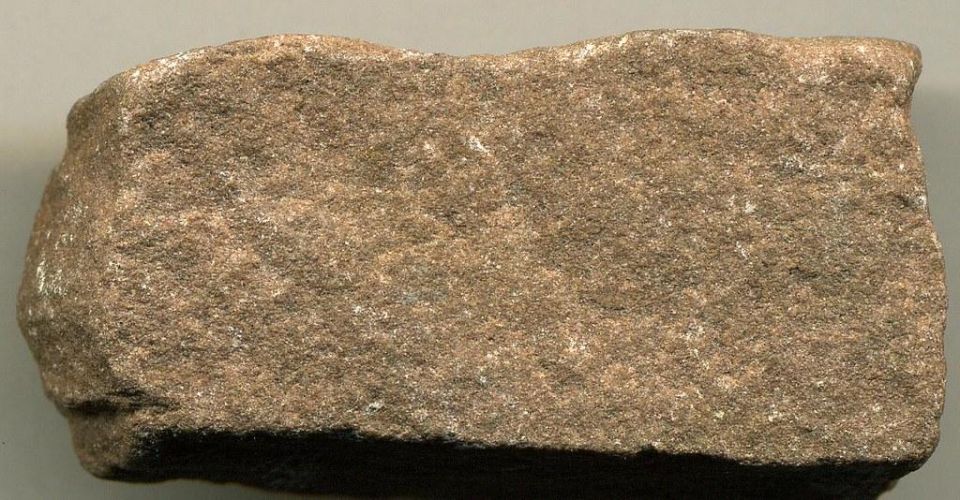
More recently, sophisticated techniques have been developed to extract natural gas from less porous, unconventional sources. This includes the much-politicised coal seam gas, as well as shale gas and tight gas – extracted from compacted sandstone. The composition of natural gas remains similar regardless of its source.
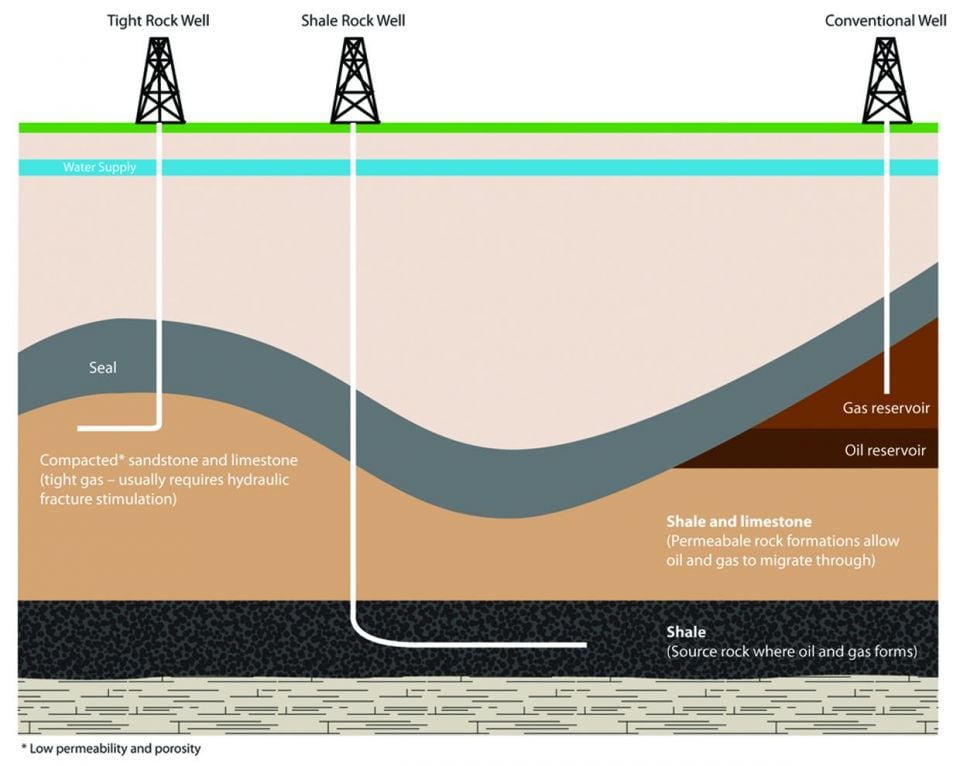
Once the natural gas has been extracted, the ‘C’ in CNG comes into play. The gas is compressed to 1 per cent of its atmospheric volume at sea level, and subsequently stored in cylinders at pressures of between 2900-3600psi.
As another fossil fuel, CNG vehicles use internal-combustion engines with certain modifications to accommodate the methane-rich nature of natural gas. Similar to LPG, it is possible for a standard petrol or diesel car to be converted to a dual-fuel alternative.
Stored onboard at pressures of up to 3600 psi, CNG is transferred to a regulator that aims to reduce the pressure of the gas to a level suitable to be injected into the combustion chamber.
Other specialised components of a CNG vehicle may include an ECU and other sensors that can optimise the fuel/air mixture to accommodate the differences in flammability compared to petrol/diesel vehicles, as well as specialised catalytic converters and high-compression pistons.
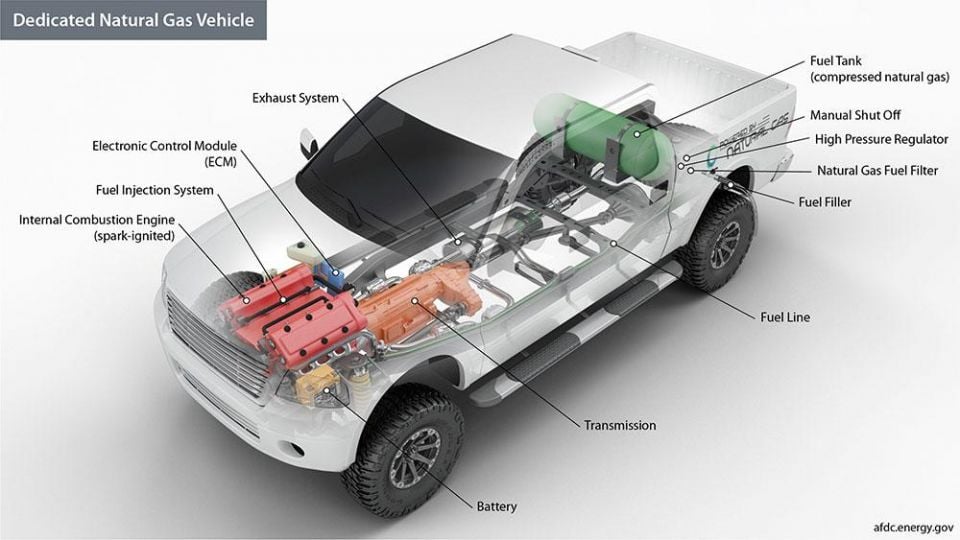
CNG tanks themselves incorporate special construction techniques, being made from composite fibreglass and then covered in impact-absorbing foam to minimise the chances of rupture during a crash. This construction makes them comparatively safer than the fuel tanks used in a typical petrol or diesel car.
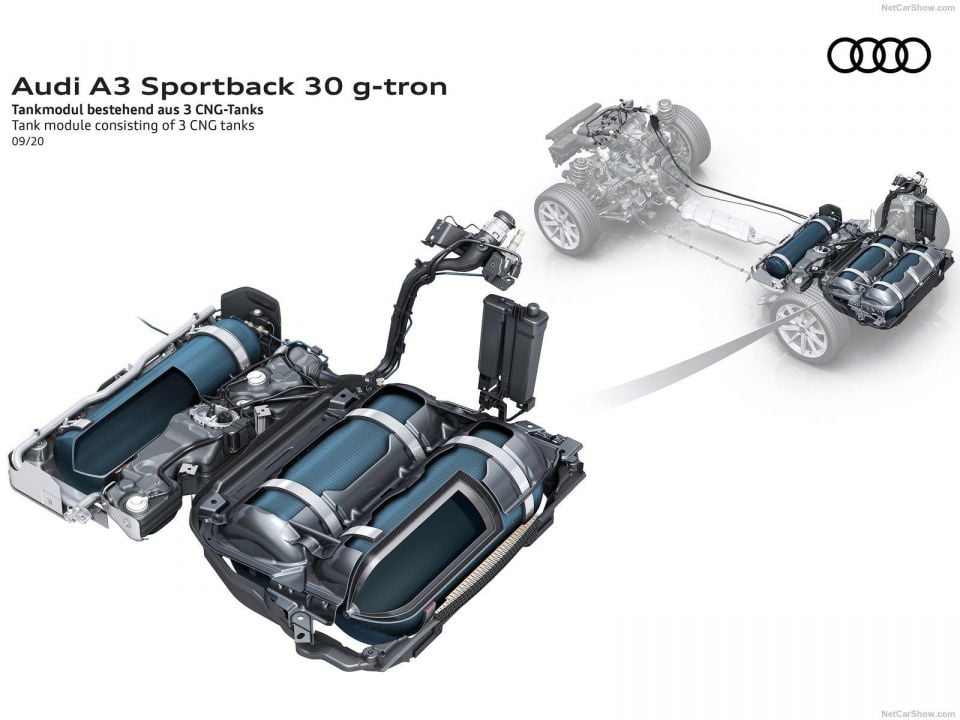
Whilst the process of extracting natural gas from unconventional sources such as coal seams has been criticised for its adverse environmental impact, CNG as a fuel is more environmentally friendly than its petrol and diesel counterparts. It produces significantly lower CO2 (carbon dioxide) and NOX (nitrogen oxide) emissions than its petrol, diesel and LPG counterparts.
The low level of particulates produced by CNG engines also means that unlike petrol and diesel, a particulate filter is not required for CNG vehicles to meet ever-tightening emissions regulations such as Euro 6.
Being a gas, CNG is less dense than liquid LPG, petrol, and diesel alternatives, and this means drivers of CNG vehicles will have to stop to refuel more often, as a lower volume of CNG can be stored. However, new technologies such as HDCNG (High Density Compressed Natural Gas) are seeking to fix this issue, by further compressing natural gas at very cold temperatures.
In Australia, CNG refuelling infrastructure is relatively limited, and so commercially-available private cars offering CNG as a refuelling option are rare.
Instead, CNG is Australia is used with commercial vehicles, such as light and heavy-duty trucks, as well as buses. Operators of these commercial fleets generally have their own private refuelling stations or operate point-to-point along a set route, alleviating the need for access to a widespread CNG fuel network.
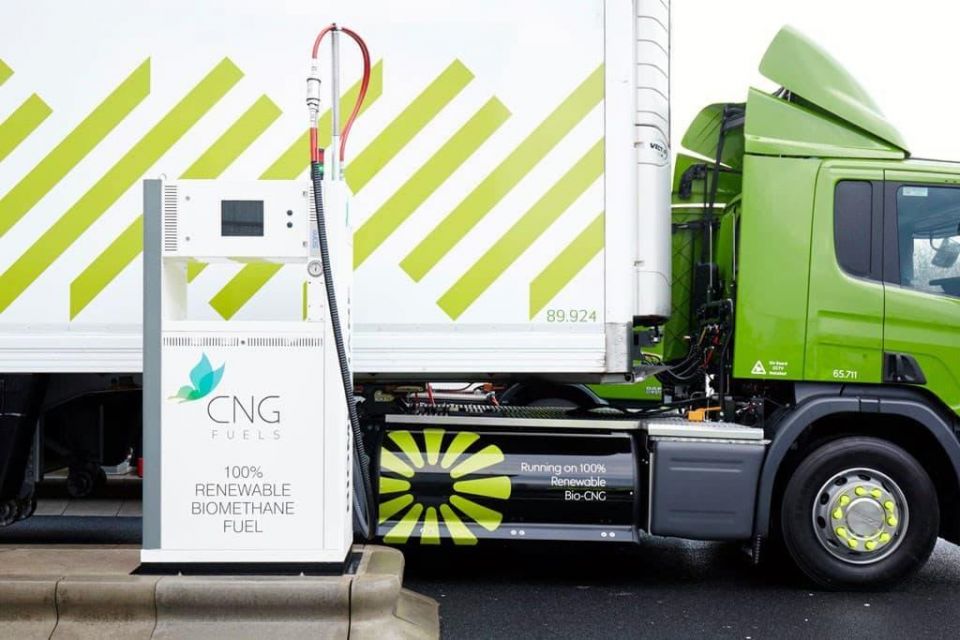
Internationally, countries with a high number of CNG vehicles include China, Iran, India, certain nations within Europe, and South American nations such as Brazil and Argentina.
India in particular is well-known for its auto rickshaws (tuk-tuks), with a high number of these now being CNG powered, as denoted by their trademark green and yellow paint.
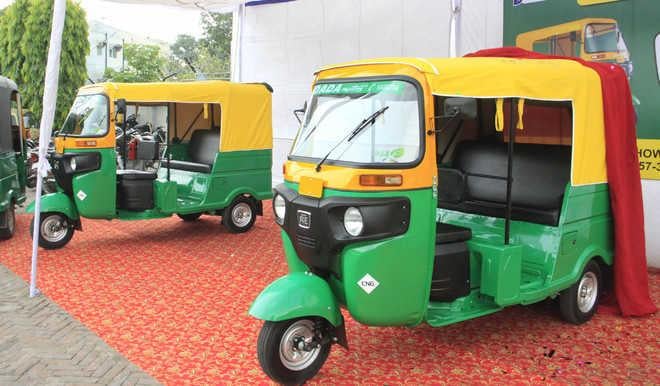
In Europe, Italy is well-known as a hub for CNG vehicles, with a widespread refuelling network available in all locations except for the island of Sardinia. The VW Group in particular has attempted to cater for this and other CNG markets worldwide through the introduction of their G-Tron (Audi) and TGI (VW/Skoda/Seat) engines.
The latest G-Tron CNG engine in the new Audi A3, for example, combines three CNG tanks with a 9.0-litre reserve petrol tank, for a total range of up to 445km (WLTP) and similar power and torque outputs to its petrol/diesel counterparts.



William Stopford
5 Hours Ago


Josh Nevett
6 Hours Ago


Ben Zachariah
22 Hours Ago


CarExpert.com.au
1 Day Ago


Damion Smy
2 Days Ago


Damion Smy
2 Days Ago